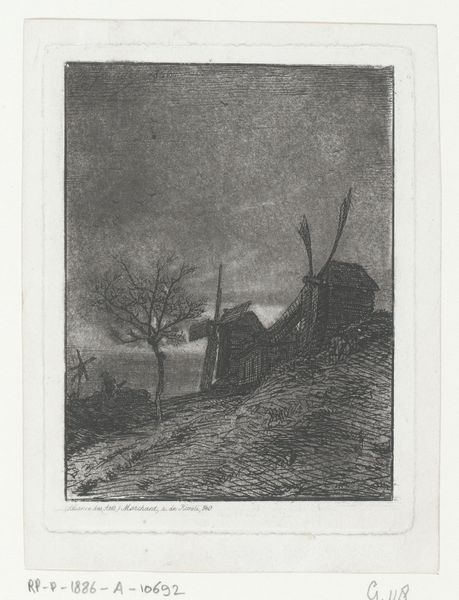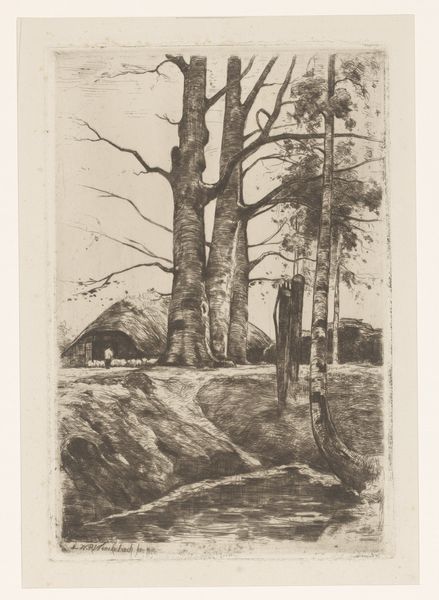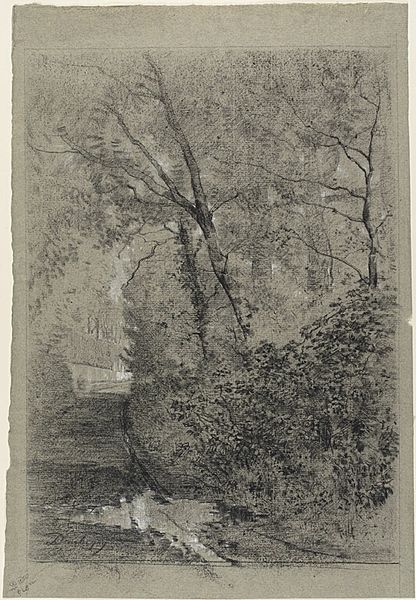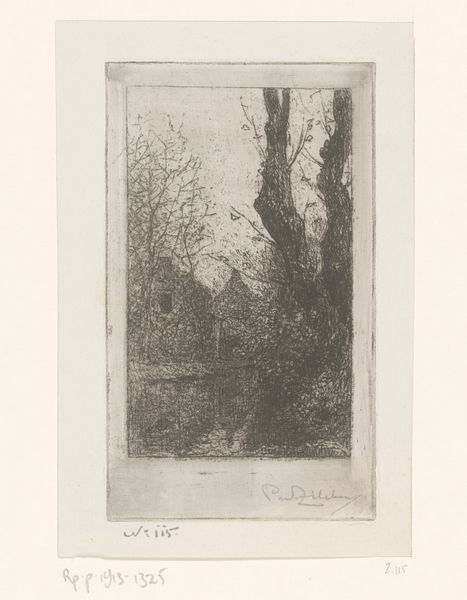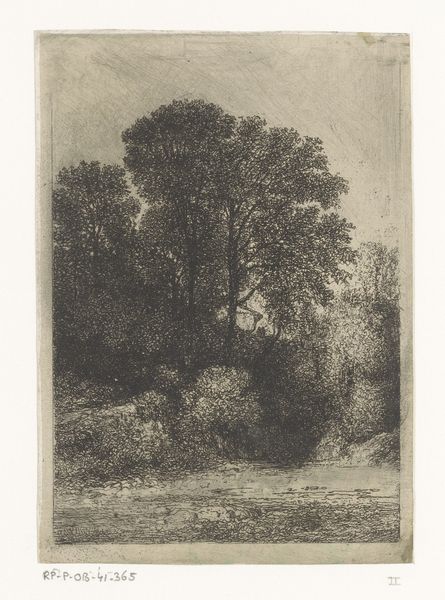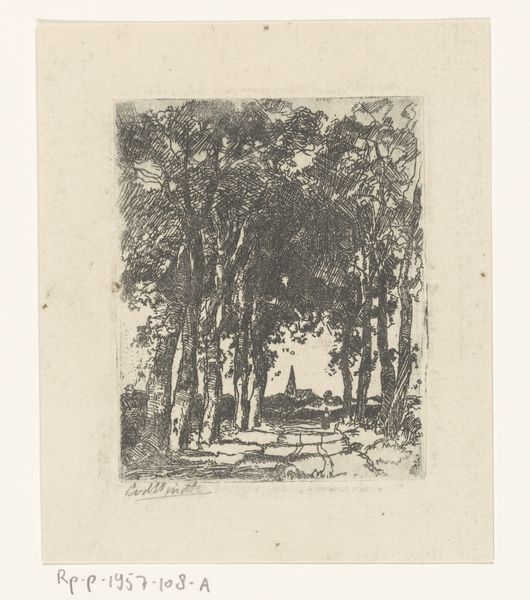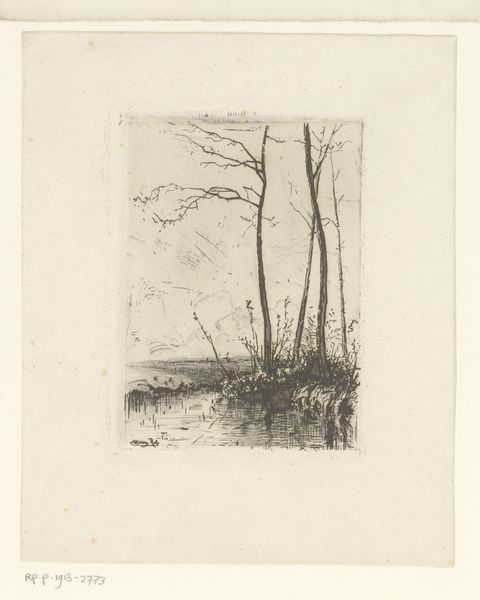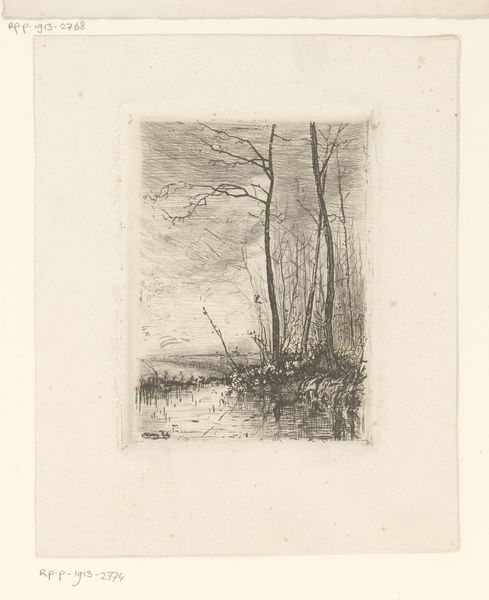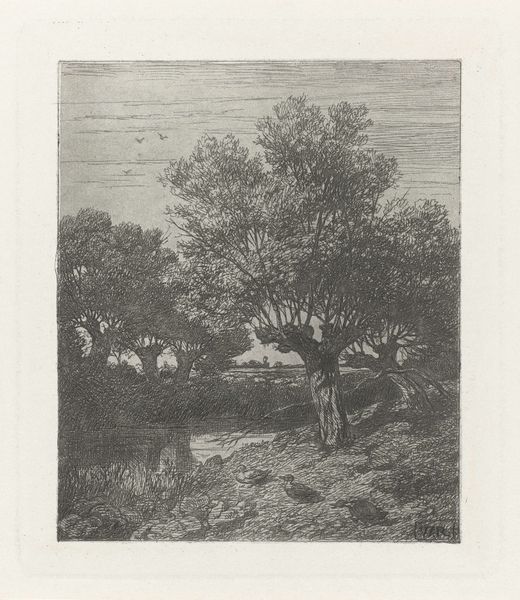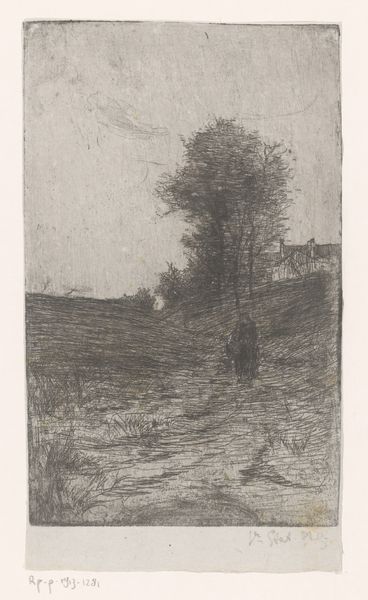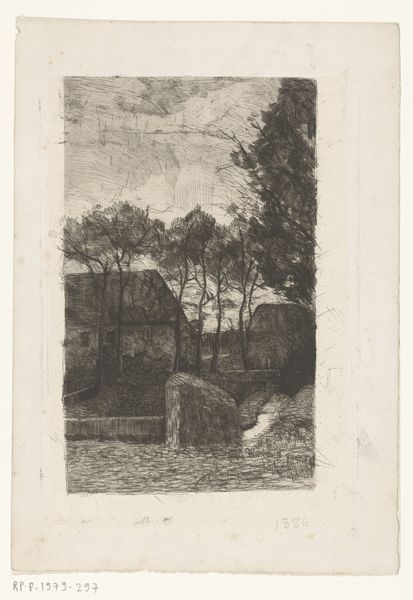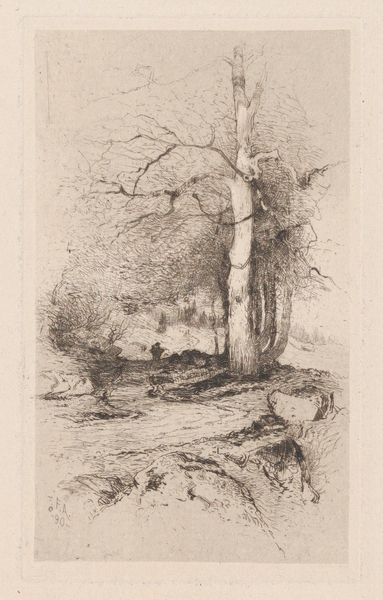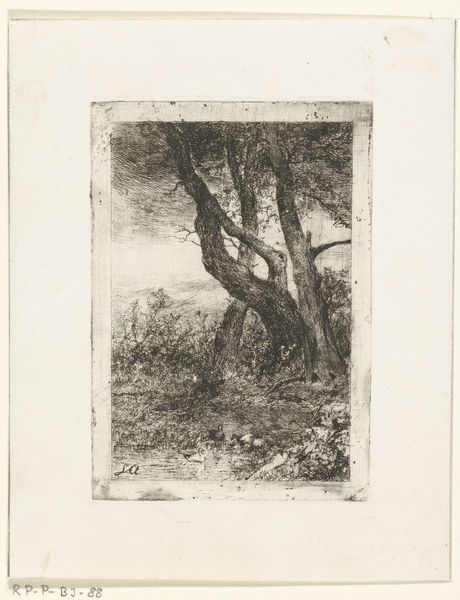
drawing, print, etching
#
drawing
#
dutch-golden-age
# print
#
etching
#
landscape
#
realism
Dimensions: height 195 mm, width 130 mm
Copyright: Rijks Museum: Open Domain
Editor: This is "Landscape with Trees and a House" by Anton Mauve, made sometime between 1848 and 1888. It’s an etching, and the whole scene is rendered in these delicate, scratchy lines. It feels very intimate, almost like a half-remembered dream. What do you see in this piece, beyond the trees and the house? Curator: Immediately, the etching reminds me of visual memories, those impressions layered and slightly faded. Note how the trees aren’t just botanical studies but seem almost to lean in, figures in conversation perhaps. Does the placement of the house, nestled behind them, suggest protection or concealment? Editor: That's interesting, I hadn't considered that. I was mostly focused on the composition. How Mauve directs the eye into the scene... Curator: Exactly. But think further: etching, as a medium, invites a certain deliberate process. Each line is a conscious decision. Why this landscape? Why these particular elements chosen to be memorialized in this way? What cultural values might be embedded in such a seemingly simple scene? Editor: So, you’re suggesting the scene isn't just about the beauty of nature, but maybe about ideas of home, security, and the relationship between people and their environment? Curator: Precisely. The very act of choosing this scene to replicate, to preserve through the etching process, transforms the ordinary into something carrying meaning. And the "scratchy lines", as you so perfectly described them, evoke temporality, fragility, like memory itself, constantly shifting. Consider Dutch Golden Age landscape painting traditions - and what is preserved, or discarded in Realism. What do you think Mauve preserved? Editor: I see it differently now. I thought it was just a simple landscape, but it seems to hold a more complex emotional resonance and symbolic meaning related to memory and cultural values. Curator: Indeed, and that's where art history becomes truly fascinating—uncovering the layers of meaning that visuals hold, speaking across time.
Comments
No comments
Be the first to comment and join the conversation on the ultimate creative platform.
